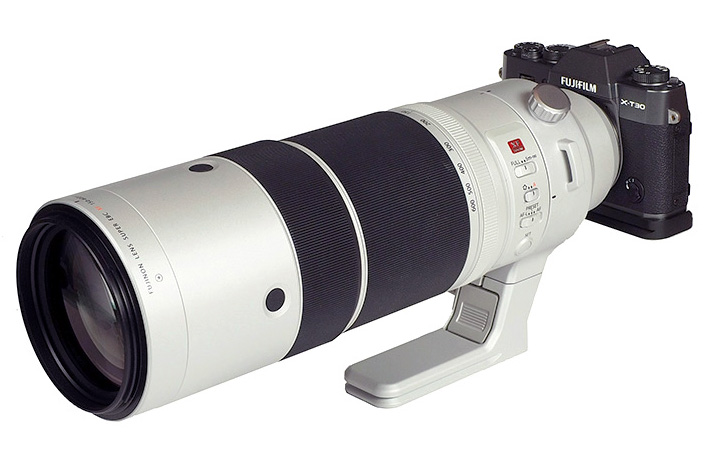Review by Klaus Schroiff, published October 2022
Introduction
A mighty long tele lens has been a deep dark gap in the Fujifilm lens lineup for years, but they finally released the long-awaited Fujinon XF 150-600mm f/5.6-8 R LM OIS WR. It is one of Fujifilm’s few “RED” badge lenses. As of the time of this review, there are just 6 of them. Thus, they consider it to be among the best they’ve got. Consequently, the entry ticket isn’t exactly cheap at around $2000USD or 2200EUR. In full format terms, we are talking about a 229-914mm lens here – (almost) ideal for wildlife and outdoor sports. These applications also explain why Fujifilm chose the pearl-white-ish color scheme for the body. Used primarily outdoors, heat can be an issue at times, and the material seems to be quite reflective. Although wildlife photographers will probably wrap it immediately in camouflage.
The build quality is superb, although you can expect no less at this price point. The lens does not extend during zooming. It is also weather-sealed and freeze-proof down to -10C. The zoom and focus control rings operate smoothly. Fujifilm implemented focus-stop buttons at the front of the lens. At the rear, you’ll find various switches for focus modes & range and the aperture ring. Designing a lens with such a slow max aperture resulted in some debates within the Fujifilm community. However, an obvious advantage of this decision is the surprising compactness and low weight of the lens. A “900mm” lens weighing just 1.6Kg is quite an achievement. In absolute terms, this is still quite heavy, of course, and Fujifilm added a dedicated tripod mount (Arca-Swiss compatible). A deep, barrel-shaped lens hood (with a window for using polarizers) is also provided. It’s a bit unfortunate that the hood is black-colored and prone to scratches – probably an opportunity for third-party companies to fix this.

The AF is very fast and silent. Manual focusing is very precise. The optical image stabilizer is rated with a gain of up to 5 f-stops. Given the slow speed of the lens, this is also needed. That being said – this isn’t a silver bullet regarding the typical target applications where fast shutter speeds are often required to freeze the action. We haven’t found any info on whether the gain increases when combined with in-camera IS (our test camera doesn’t feature IBIS).
There has been some confusion regarding the compatibility with older Fujifilm cameras (including our little X-T30). The primary functions of the lens are, of course, working just fine, but the following features are only supported on newer cameras – the “Focus Selector” (AF-L, PRESET, AF), the “Focus Preset Button,” and the “Focus Control Buttons.” While zooming, the focus is also not automatically adjusted until the zooming stops on older cameras. The X-S10, X-T4 and X-T3 require a firmware update to support all aspects of the XF 150-600mm f/5.6-8 R LM OIS WR.
| Specifications | |
|---|---|
| Optical construction | 24 elements in 17 groups inc. 3zED, 4xSUD elements |
| Number of aperture blades | 9 (rounded) |
| Equiv Full Format | “229-914mm f/8-f/11” |
| Image Stabilizer | 5 f-stops gain |
| min. focus distance | 2.4m (max magnification: 1:4.2) |
| Dimensions | Ø99mm×314.5mm |
| Weight | 1605g |
| Filter size | 82mm |
| Hood | barrel-shaped (bayonet mount, supplied) |
| Other features | moisture-resistant design, tripod collar, dust and weather resistant, freeze-proof |
Distortion
Image auto-correction is the de-facto standard today. Activated, you don’t have to worry about distortions, as you can see below.
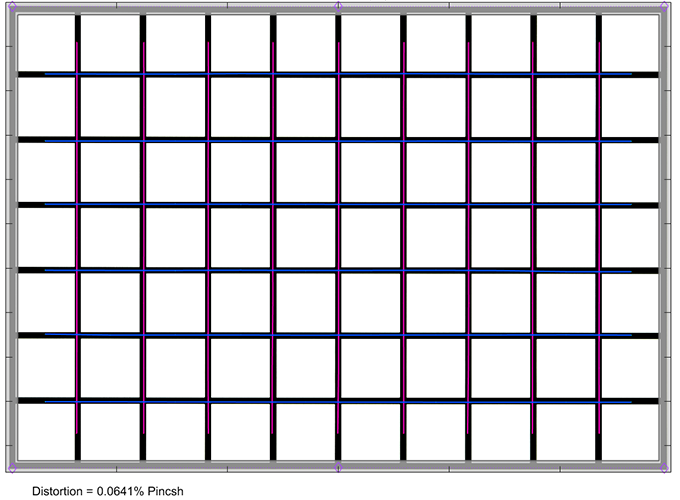
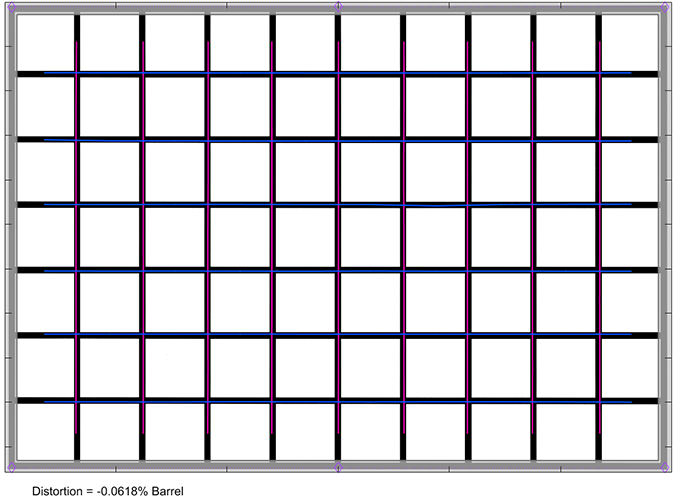
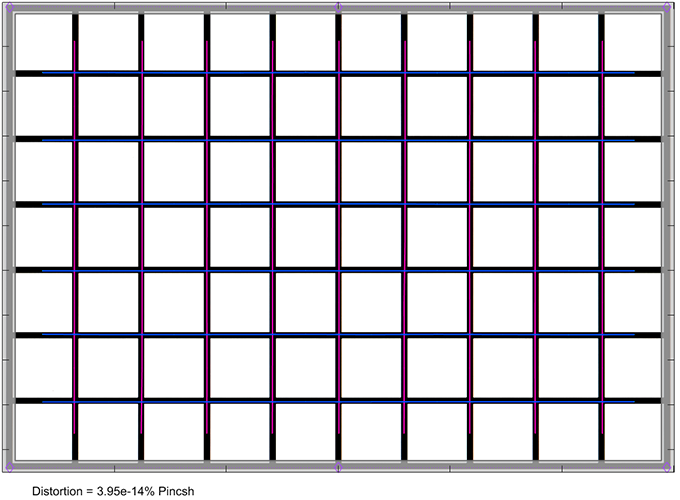
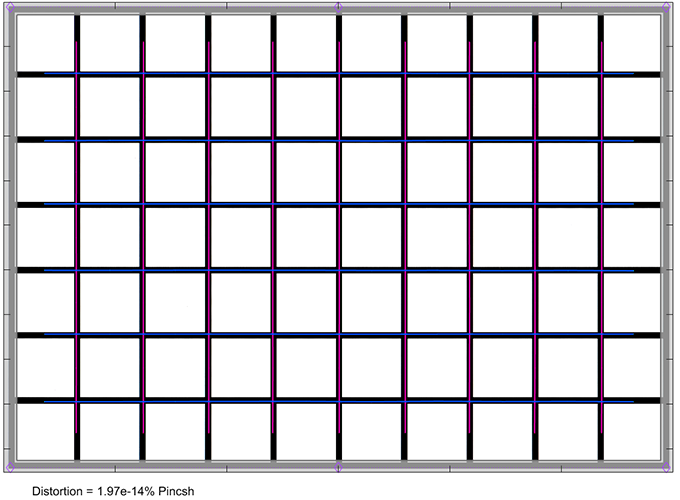
Lenses for mirrorless cameras often produce an insane amount of image distortions in RAW files. However, almost surprisingly, this is not the case with the Fujinon. It produces pincushion distortions, yes, but they are on a very low level with a peak of just 0.8% at 600mm. We actually think that Imatest reported too much there. Visually, we’d estimate it more around the 0.3% mark here.
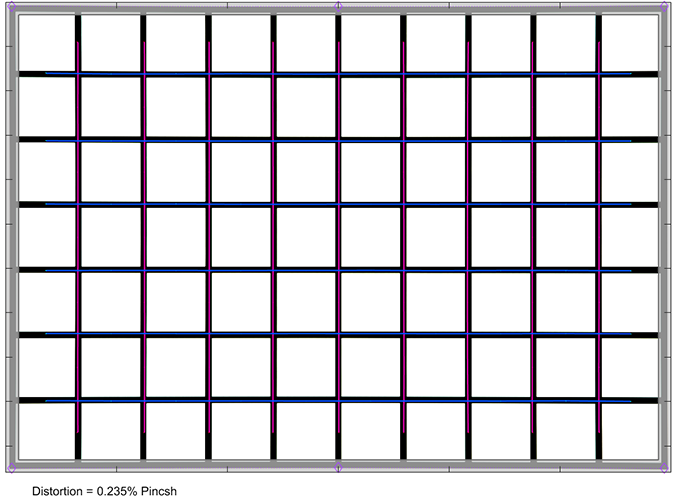
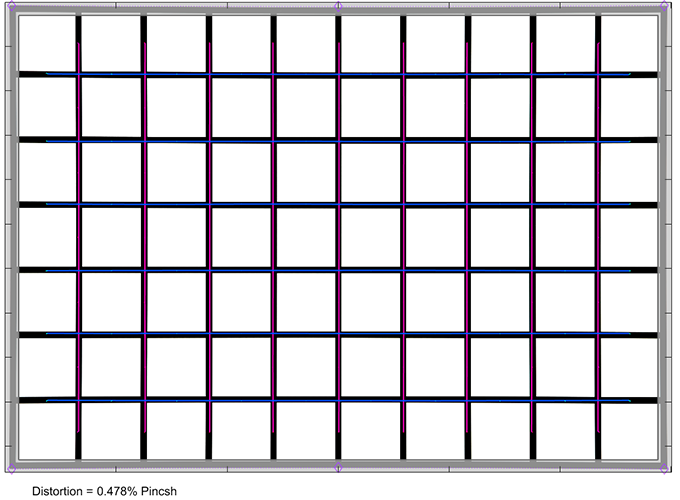
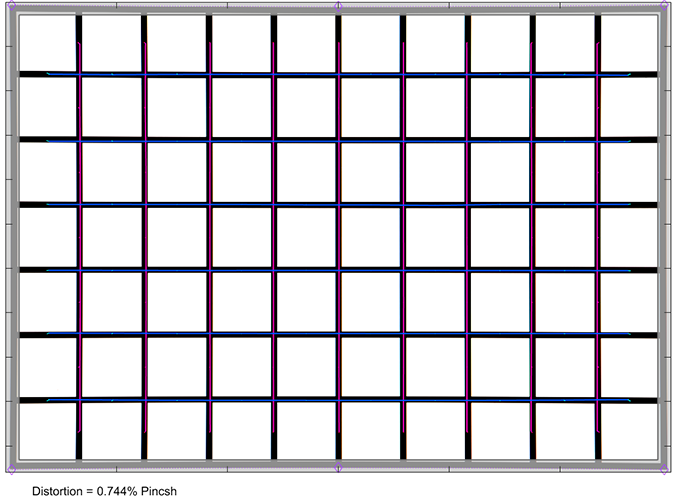
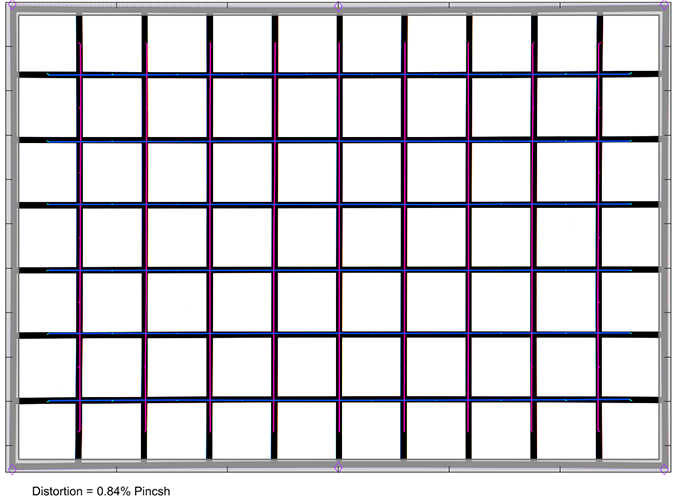
Vignetting
In standard shooting mode (auto-correction activated), the vignetting is basically absent. However, once again, there are no issues in RAW images either. The chart below shows the RAW figures only.
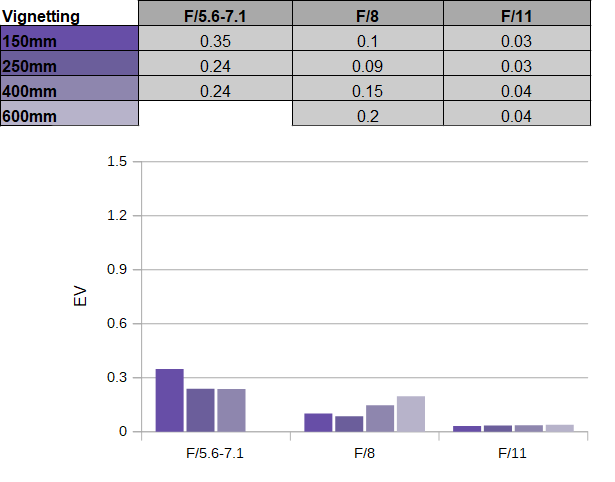
Diffraction on APS-C cameras
Fujifilm is moving to 40 megapixels sensors and, before discussing the lens resolution, we should have a word about diffraction.
Diffraction is defined as the interference or bending of waves through an aperture. Or in other words – it limits the achievable resolution.
Visible light is usually defined as having wavelengths in the range of 400–700 nanometres (nm). Blue (~450nm) has a smaller wavelength than red (~650nm), as you can see below.

You can calculate the diffraction limit in megapixels for a given light wavelength and a sensor format. We have prepared the illustration below showing the limits for MFT, APS-C and Full Format. The underlying formulas can be looked up in Wikipedia. Or just google the excellent article over at Luminous Landscapes for a more detailed explanation.
We have marked the range where the Fujinon XF 150-600mm f/5.6-8 R LM OIS WR operates at maximum aperture for a wavelength of 420nm … which is a rather optimistic starting point (the megapixel limits are much worse for red light).
At f/5.6, the theoretical maximum – for an optimal lens – is about 44 megapixels. At f/8, it’s 22 megapixels. Or in other words, assuming that the lens has its maximum resolution at a wide-open aperture, there are basically no issues with Fujifilm’s 26 megapixels sensor – if the lens was PERFECT. Perfect lenses do not exist, of course. In contrast, just because of diffraction, you can expect some natural softness on Fujifilm’s new 40-megapixel sensors creeping in from somewhere in the middle of the zoom range.
Just to point this out – we aren’t telling you this – physics does.
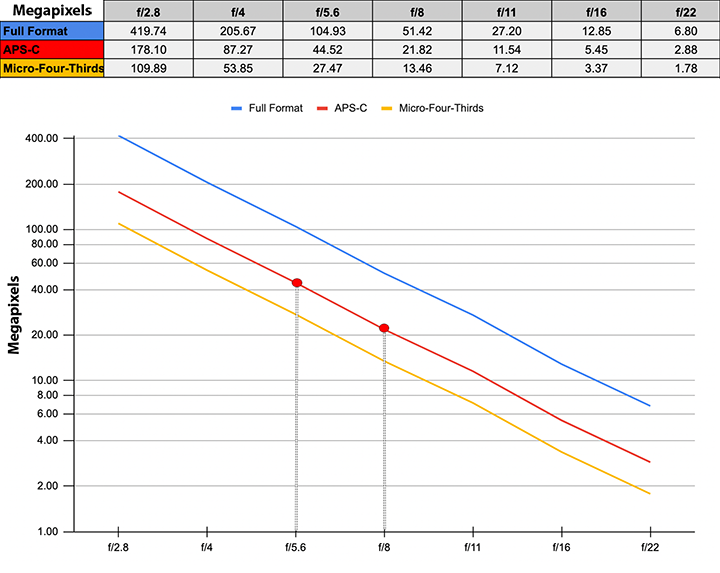
The above is theory, whereas below is the effect of diffraction in one of our lab tests – here: the center performance of the Fujinon XF 80mm f/2.8 LM WR OIS macro.
A macro lens is about as sharp as it gets – being a focus-range corrected, moderately fast prime lens. You can see that the lens performance peaks at f/4. Such a peak at f/2.8 to f/4 is typical for APS-C format lenses on 24-ish megapixel sensors. f/5.6 is affected by diffraction, more so beyond. We have marked the aperture range of the XF 150-600mm f/5.6-8 R LM OIS WR in red to provide the context for the results in the following chapter.
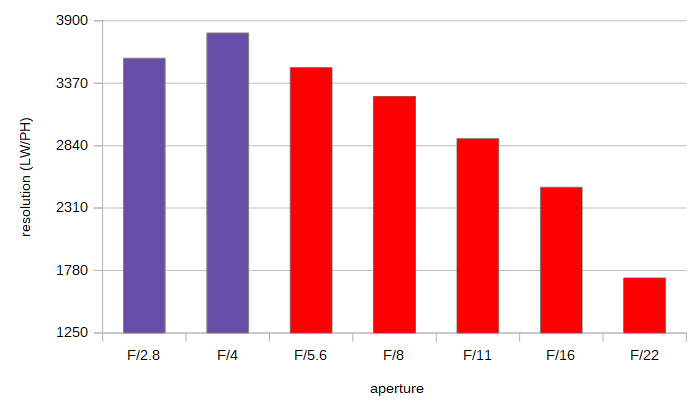
MTF (resolution at 26 megapixels)
I suppose the following may require a deep breath from some readers. There is a reason why we elaborated on diffraction in the previous chapter – even a RED badge Fujinon has to adhere to physics. At 150mm, the dampening effect from diffraction is still very moderate. The lens is very sharp at this setting at f/5.6, and that’s across the image frame. Stopping down results in an immediate decrease which becomes more noticeable at f/11.
The more you zoom out, the slower the max aperture – and the more pronounced the impact from diffraction. At 250mm f/6.4, the results are still pretty similar to what we’ve seen at 150mm. The 400mm results are ever so slightly worse again due to the max aperture of f/7.1 here. At 600mm and f/8, the resolution goes down a little more. The center is still very good, whereas the outer image field is reduced to good quality levels. f/11 should be avoided if possible.
The field curvature is low. The centering quality of the tested sample was very good.
Please note that the MTF results are not directly comparable across the different systems!
Below is a simplified summary of the formal findings. The chart shows line widths per picture height (LW/PH) which can be taken as a measure of sharpness. If you want to know more about the MTF50 figures, you may check out the corresponding Imatest Explanations.

Chromatic Aberrations (CAs)
Once again – lateral CAs are auto-corrected, so you don’t have to worry in real life. When looking into the RAW results, the CAs are moderate. The average CA pixel width peaks just beyond 1px at the image borders. Not bad, but, at least in theory, noticeable.

Bokeh
Ultra-long tele lenses tend to have a fairly busy bokeh compared to prime lenses – usually because of strong outlining of the out-of-focus highlights. In critical scenes, this also applies to the Fujinon XF 150-600mm f/5.6-8 R LM OIS WR, as you can see below. The outlining intensifies when stopping down.

The circular shape of the highlights deteriorates somewhat towards the image borders. However, the effect is comparatively moderate on this lens. As usual, this can be fixed by stopping down … although you shouldn’t do that for the reasons mentioned above.
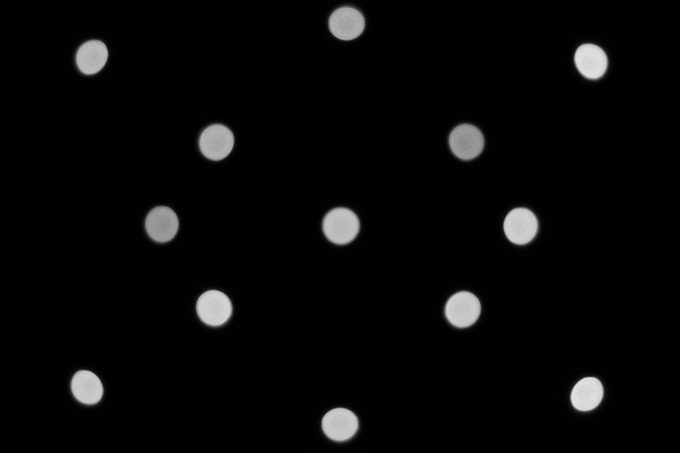
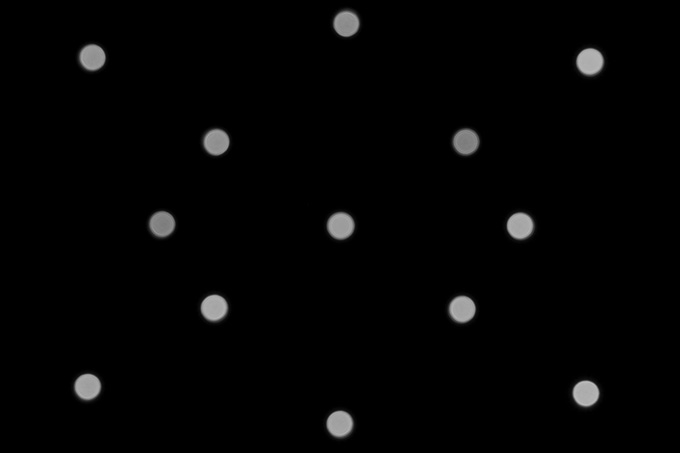
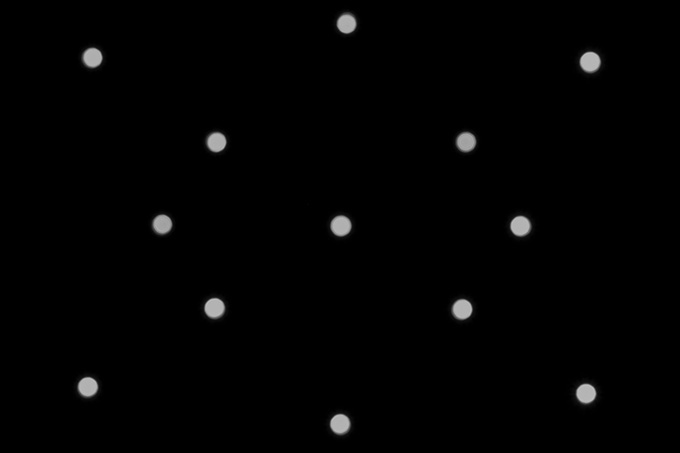
The quality of the general blur is somewhat harsh in the focus transition zones of both the image background (left below) and foreground (to the right). This isn’t unusual for a super-tele zoom lens.

Bokeh Fringing / LoCA
Boheh fringing (also called LoCA) is an axial color fringing effect with purplish halos in front of the focus point and greenish beyond. Due to the slow speed of the Fujinon, this isn’t an issue.
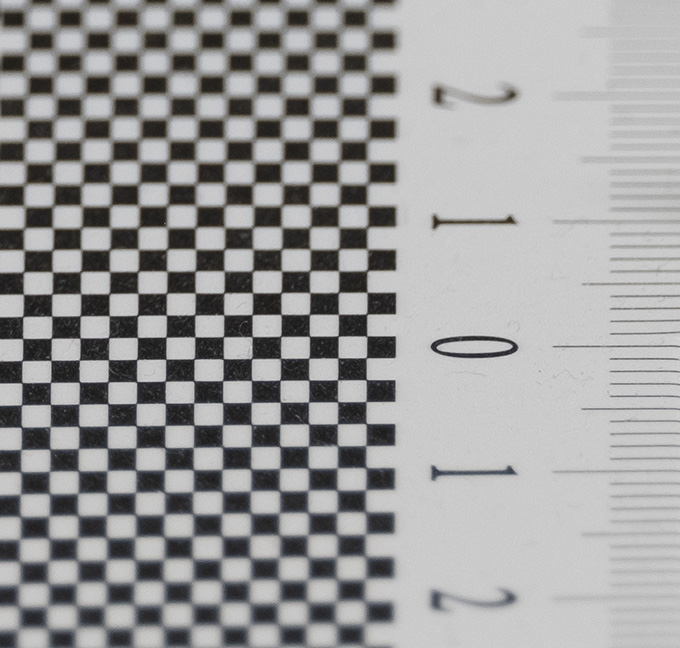

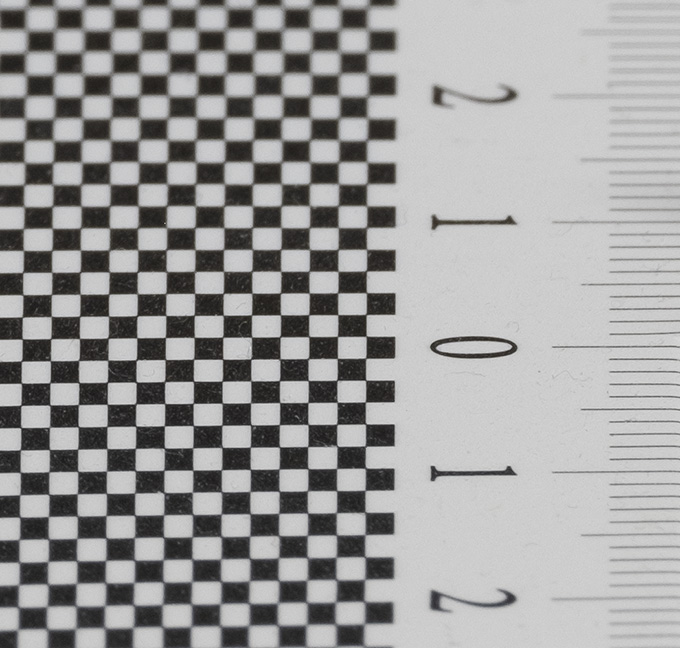
Competition
Fujifilm isn’t alone in the super tele zoom game anymore. Tamron has joined forces with Fujifilm, and their 150-500mm F/5-6.7 Di III VC VXD (shown in the center) is now available in X-mount. Now you may frown upon this lens because it’s “merely” an adapted full-format lens. They have been offering this lens for a while now in E-mount. As you may notice immediately from the picture below, the Tamron lens is far more compact when retracted. However, it’s also slightly heavier due to its full format origins (thus bigger glass elements). Besides offering 100mm less, it is marginally faster at 500mm (f/6.7 vs f/7.1 on the Fujinon at 500mm). This may be an advantage on a 40-megapixel sensor – although 40 megapixels on APS-C will push most lenses beyond their natural limits in any case. The Tamron lens is here for testing at the moment in Sony E-mount, so we can’t comment on its performance other than the lens has received favorable comments on other sites. It’s also $500/EUR more affordable. Keep in mind, however, that it has an extending zoom mechanism which is not ideal in terms of long-term durability compared to the Fujinon. And nothing beats 500mm but 600mm, of course. If you don’t require 500mm or 600mm, there’s also the Fujinon XF 100-400mm f/4.5-5.6 R LM OIS WR. It’s also a RED badge lens and pretty good, indeed. The 100mm setting also allows for more versatility for in-room sports or (basic) people photography.

Sample Images
Part I - Field Impressions:
Let's split the verdict into two parts this time because context is important. Lab results are one thing, but that's the beginning of wisdom and not the end of it. Yes, the Fujinon XF 150-600mm f/5.6-8 R LM OIS WR is a slow lens. However, we can see where Fujifilm is coming from here. If you've ever carried a 600mm f/4 lens into the outdoors, you know that it's a PAIN. And slow lenses are simply more compact and lightweight. Realistically, Fujifilm won't be able to compete with a full format 600mm f/4 anyway, but they can compete with similar super-tele zoom lenses. The other aspect that you have to keep in mind is that outdoor conditions are less than perfect most of the time. There's atmospheric interference from heat or haze at longer distances, and there's always a bit of wind at least. In real life, you rarely achieve the same maximum sharpness as in lab conditions.
So while the MTFs may not be top-notch, they are more than just "good enough" in the real world on 26-megapixel sensors at least. 40 megapixels may be a different story. Thus based on real-world use, we are happy with what the lens can deliver ... and specifically that the burden of carrying it around wasn't unbearable.
Part II - Technical Aspects:
In technical terms, the Fujinon XF 150-600mm f/5.6-8 R LM OIS WR is a victim of its slow speed. From a lab perspective, the results are very good until about 500mm, with "very good" meaning that 99% of the users will be perfectly happy. At 600mm, you may miss some biting sharpness - more so on 40-megapixel bodies. Image distortions are surprisingly low, even in RAW images. It's almost hard to believe that there are "mirrorless" lenses that can still do that. The same applies to vignetting, so it's obvious that the lens has not been "underdesigned" like so many others. Lateral CAs are slightly higher than you may expect from a pro lens, but you won't notice this with auto-correction anyway. The bokeh quality is similar to what we have seen from other tele zoom lenses - meaning that out-of-focus highlights can be a bit busy in difficult scenes.
The build quality of the lens is excellent and aligned for professional use. We especially like the non-extending zoom mechanism, although it comes at the cost of being a longer lens at shorter focus distances compared to an extending zoom design. However, it just provides better protection against the elements. The pearl-white-ish color scheme of the body may not be to everybody's taste, but it surely does the job of reflecting heat better than anything black. The lens is also specced for use down to -10C so that winter may come after all. The five f-stop image stabilizer is pretty efficient for a lens of this class. As far as the AF goes - at this point, we only had a "measly" X-T30 for testing, but even so, the AF speed was pretty snappy and reliable. It'll be better on a pro-grade camera body such as the X-H2 and X-H2s, of course.
Overall - well done, Fujifilm. Whether this is a lens for you depends on your budget and your speed requirements. The speed and optical quality have been balanced with portability. Ultimately, we think that this was a good choice within the scope of the X-mount system. Therefore highly recommended (for the use on 26-megapixel cameras).
-
Optical Quality
-
Build Quality
-
Price/Performance


